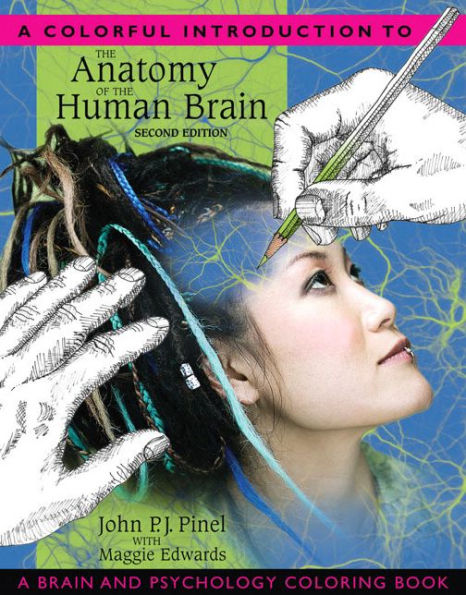Table of Contents
Preface. To The Reader. How to Use This Book. PART 1: BASIC NEUROANATOMY.
Chapter 1: Organization of the Human Nervous System.
Introduction
1.1 Divisions of the Nervous System.
1.2 Divisions of the Central Nervous System.
1.3 Divisions of the Peripheral Nervous System.
1.4 Organization of the Spinal Cord.
1.5 Divisions of the Autonomic Nervous System.
1.6 The Endocrine System.
Review Exercises
Chapter 2: Planes and Directions in the Human Nervous System.
Introduction
2.1 Planes in the Human Brain.
2.2 Directions in the Human Nervous System.
2.3 Sides of the Human Nervous System.
Review Exercises
Chapter 3: Cells of the Nervous System.
Introduction
3.1 The Neuron: Its Major Regions.
3.2 The Neuron: Structures of the Cell Body.
3.3 The Neuron: Structures of the Terminal Buttons.
3.4 Neural Conduction Through Dendrites and Cell Body.
3.5 Axonal Conduction and Synaptic Transmission.
3.6 Myelination and Saltatory Conduction.
3.7 The Neuron Cell Membrane and Receptors.
3.8 Glial Cells
Review Exercises
Chapter 4: Early Development of the Human Nervous System.
Introduction
4.1 Development of the Neural Tube.
4.2 Six Processes of Early Neural Development.
4.3 Early Development of the Brain's Three Major Divisions.
4.4 Early Development of the Brain's Five Divisions.
4.5 Axon Growth: Correctly Wiring the Nervous System.
4.6 Adult Neurogenesis
Review Exercises
Chapter 5: Gross Anatomy of the Human Brain.
Introduction
5.1 Cerebral Hemispheres and Brain Stem.
5.2 The Five Divisions of the Mature Brain.
5.3 The Meninges.
5.4 The Cerebral Ventricles.
5.5 Tracts and Nuclei.
5.6 The Cerebral Commissures.
5.7 The Cranial Nerves.
Review Exercises
Chapter 6: Major Structures of the Brain Stem.
Introduction
6.1 Major Structures of the Myelencephalon.
6.2 Major Structures of the Metencephalon.
6.3 Major Structures of the Mesencephalon.
6.4 Diencephalon: The Thalamus.
6.5 Diencephalon: The Hypothalamus.
6.6 The Hypothalamus and Pituitary.
Review Exercises
Chapter 7: Major Structures of the Cerebral Hemispheres.
Introduction
7.1 Major Fissures of the Cerebral Hemispheres.
7.2 Lobes of the Cerebral Hemispheres.
7.3 Major Gyri of the Cerebral Hemispheres.
7.4 The Cerebral Cortex.
7.5 Divisions of the Cerebral Cortex.
7.6 Primary Sensory and Motor Areas.
7.7 Subcortical Structures: The Limbic System.
7.8 Subcortical Structures: The Basal Ganglia.
Review Exercises
Part II: FUNCTIONAL NEUROANATOMY.
Chapter 8: Sensory Systems of the Central Nervous System.
Introduction
8.1 Visual System: From Eye to Cortex.
8.2 Cortical Visual Areas.
8.3 Auditory System: From Ear to Cortex.
8.4 Cortical Auditory Areas.
8.5 Somatosensory System: From Receptors to Cortex.
8.6 Cortical Somatosensory Areas.
8.7 The Descending Analgesia Circuit.
Review Exercises
Chapter 9: Sensorimotor Pathways of the Central Nervous System.
Introduction
9.1 Sensorimotor Cortical Pathways.
9.2 Primary Motor Cortex.
9.3 The Descending Dorsolateral Motor Pathways.
9.4 The Descending Ventromedial Motor Pathways.
9.5 The Cerebellum and Basal Ganglia.
9.6 Parkinson's Disease and the Nigrostriatal Pathway.
Review Exercises
Chapter 10: Brain Structures and Memory.
Introduction
10.1 Hippocampal Formation and Memory: The Case of H.M.
10.2 Rhinal Cortex and Memory.
10.3 Hippocampus and Spatial Memory.
10.4 Medial Diencephalon and Memory: Korsakoff's Amnesia.
10.5 Basal Forebrain and Memory: Alzheimer's Amnesia.
Review Exercises
Chapter 11: Motivational Systems of the Brain.
Introduction
11.1 Hypothalamus and Eating.
11.2 Subfornical Organ and Deprivation-Induced Thirst.
11.3 Mesotelencephalic Dopamine System and Pleasure.
11.4 Neural Mechanisms of Fear and Anxiety.
11.5 Reticular Formation and Sleep.
11.6 Suprachiasmatic Nucleus and Circadian Rhythms.
11.7 Brain Stem Sex Circuits.
Review Exercises
Chapter 12: Cortical Localization of Language and Thinking.
Introduction
12.1 The Wernicke-Geschwind Model of Language.
12.2 Cortical Areas Implicated in Reading
12.3 Cortical Language Circuits: Mapped by Brain Stimulation
12.4 Major Areas of Prefrontal Cortex and Their Functions
12.5 Medial Prefrontal Cortex and Social Cognition
Review Exercises
Answers to Review Exercises
Index



